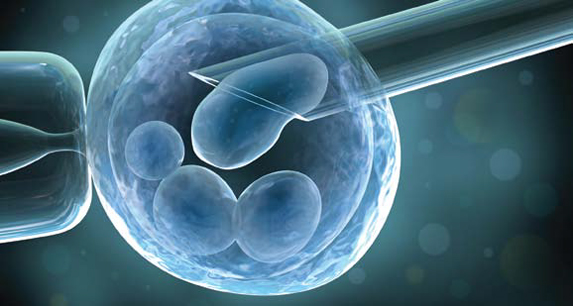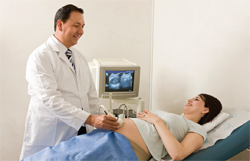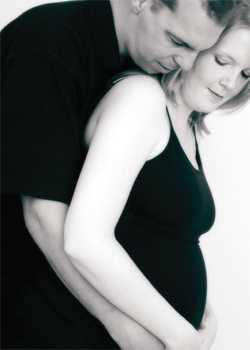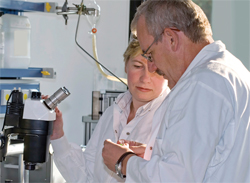
Reproduction—perhaps the most basic impulse of all living creatures—is also among the most complex and intricate of all human processes, requiring the precise coordination of many biological systems. This becomes most evident when things go wrong. According to the Centers for Disease Control, in the U.S. alone there are more than seven million women with an impaired ability to have children.
Difficulty conceiving can be due to age, stress, health, or any number and combination of factors, many of which come into play as more women wait until later in life to have children. Often such women turn to invasive, expensive procedures to induce pregnancy—procedures that frequently fail and that, even when successful, can cause a host of health problems for the women and children both.
At the Weizmann Institute of Science in Israel, researchers are studying the ways in which women—and men—struggle with infertility, and are seeking ways to overcome those challenges. Following are some examples of how the Weizmann Institute is working to give humanity a future, and making this a healthier, more joyous world.
Hurting that Heals: How “Biopsy-Treatment” is Improving IVF
As in vitro fertilization (IVF) has become more common, so has the number of women bearing multiple children—triplets, quadruplets, and more. This is because, in order to increase the odds of a successful pregnancy, several embryos are implanted in the womb during the IVF procedure. However, in addition to financial and personal costs, multiple fetuses can cause problems such as restricted fetal growth, low birth rate, preterm delivery, increased risk of infant mortality, congenital malformations, and maternal complications.

Prof. Nava Dekel of the Department of Biological Regulation realized that if scientists could improve the rate of successful implantation, single-embryo transfers during IVF would be more often practiced, thereby avoiding multiple pregnancies and related problems. As she investigated the process of embryo implantation, she made the surprising discovery that performing a uterine biopsy—causing a slight injury to the lining of the uterus—just before a woman undergoes IVF doubles the chances of a successful pregnancy. The injury apparently provokes a response that makes the uterus more receptive to the embryo’s implantation.
While basic science research often takes many years to reach fruition, this procedure, termed “biopsy-treatment,” is already being used, resulting in births to women who had all but given up hope of having a baby. Prof. Dekel’s research has led to what is perhaps the most positive result of all: life.
Prof. Nava Dekel is the incumbent of the Philip M. Klutznick Professorial Chair of Developmental Biology.
Stress Test: The Link between Stress and Fertility
 Any parent can tell you that having children is stressful. But, for those who want children and are having trouble getting pregnant, not having children is also stressful—and that’s on top of managing career, home, health, and other complexities of living today. Does the stress of modern life affect fertility? And if so, can something be done to help?
Any parent can tell you that having children is stressful. But, for those who want children and are having trouble getting pregnant, not having children is also stressful—and that’s on top of managing career, home, health, and other complexities of living today. Does the stress of modern life affect fertility? And if so, can something be done to help?
Weizmann Institute scientists are searching for answers to these contemporary questions. For example, Dr. Alon Chen of the Department of Neurobiology studies stress and how it affects the body, and is collaborating with Prof. Dekel to investigate the role of an important stress-response hormone, the corticotrophin releasing factor (CRF), within the reproductive system. The CRF hormone is of particular interest because it is synthesized in all components of the female reproductive tract, including the ovary and the uterus. The scientists expect that this research will lead to a greater understanding of the relationship between stress and fertility, and hope that this knowledge will in turn aid in the development of new ways to manage infertility and the stress response.
Sperm Guidance System: A Conceptual Revolution

It has long been thought that the journey of sperm is made blindly, and that they find their way by chance along the uterus lining and the fallopian tube to the ovum. Prof. Michael Eisenbach of the Department of Biological Chemistry, in what is nothing less than a conceptual revolution in the field of mammalian reproduction, has shown otherwise. In fact, not only are the sperm led to their destination, they are directed by not one, but two, guidance mechanisms: chemical and temperature gradients, or chemotaxis and thermotaxis.
Starting with chemotaxis, Prof. Eisenbach has found two sources of sperm chemoattractants (chemicals that attract) in the female genital tract: the oocyte and the cumulus cells that surround it. In the case of the cumulus cells, his team demonstrated that only a single chemoattractant is involved: progesterone. His continued research includes determining the chemoattractant secreted by the oocyte as well. His group has recently taken significant first steps in revealing the behavioral mechanisms underlying both sperm chemotaxis and thermotaxis, and in identifying molecular components involved in the latter.
It is believed that Prof. Eisenbach’s findings not only advance basic science, but also have far-reaching clinical implications. For example, chemotaxis and thermotaxis can potentially be used in clinical procedures of IVF both as a diagnostic tool for sperm quality and as a means of increasing the amount of sperm cells that have fertilizing potential. It is also possible that these guidance processes can be employed as a means of contraception by interfering with the normal fertilization process. However, one thing is certain: by focusing on the male side of the equation, Prof. Eisenbach is helping to balance the fertility field.
Prof. Michael Eisenbach is the incumbent of the Jack & Simon Djanogly Professorial Chair in Biochemistry.
